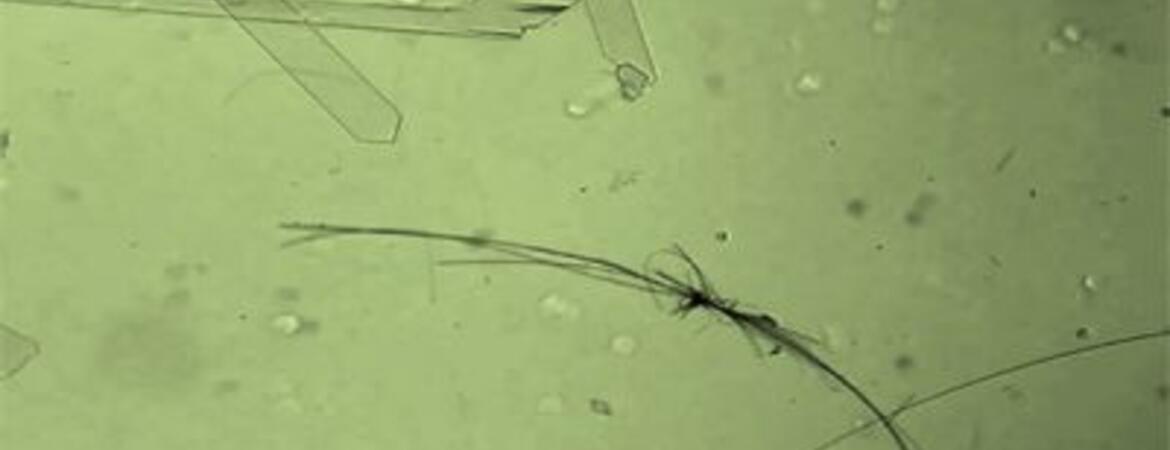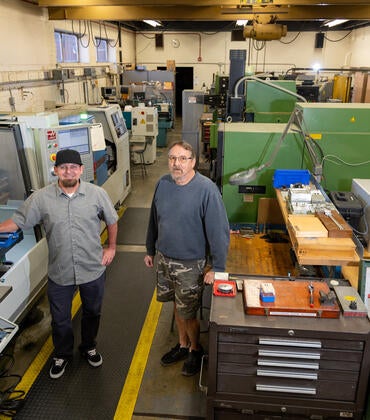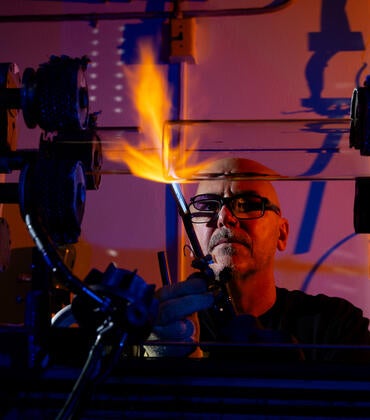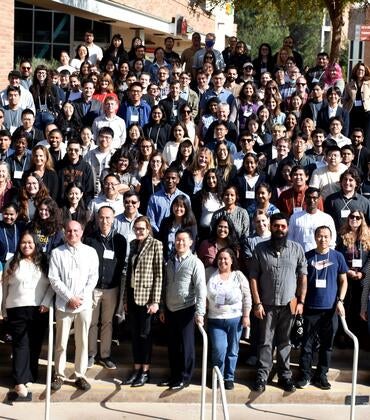Christopher J. Bardeen, a professor of chemistry at UC Riverside, and his former postdoctoral researcher, Rabih O. Al-Kaysi, have developed devices made from crystallized molecules that perform coordinated movements when exposed to light. These tiny molecular machines could be used by physicians as light-activated drug-delivery robots or engineered into arrays that direct the flow of water around a submarine and a ship’s hull.
The pair announced their findings last month at the spring meeting of the American Chemical Society, which took place in New Orleans, Louisiana, and was offered also in hybrid format.
“These crystals can undergo photochemical reactions without cracking or shattering, as long as they have the right shape or size,” Bardeen said. “Most people think of crystals as fragile. But these crystals can show large motions, like 10% expansions or large bending motions, even though the molecular scale chemistry leads to changes on the order of less than an Angstrom. Basically, the crystals are very good at amplifying the small-scale molecular motions.”
According to Bardeen, it is possible to design a molecule and crystal shape that support continuous motion, like a motor, in response to light.
“We still don’t totally understand the mechanism, but it was stunning to see simple chemical systems undergo life-like thrashing and writhing motions,” he said.
Al-Kaysi, now an organic chemist at King Saud bin Abdulaziz University for Health Sciences and King Abdullah International Medical Research Center, has worked with Bardeen for more than two decades on photomechanical crystals, which convert energy they absorb from light into mechanical work.
Bardeen, Al-Kaysi, and their research team built their initial molecular crystal motor in 2021 with molecules that enabled “photoisomerization,” the conversion of one isomer into another isomer by light. When exposed to light, the individual molecules in the motor wave one of their chemical groups back and forth; their collective motion results in visible movement of the motor itself.
“Our first motor was a microwire that bent and fluttered when I exposed it to a combination of UV and visible light,” Al-Kaysi said. “It looked like a ribbon dancer. It looked alive!”
Specifically, the research team synthesized a library of light-absorbent anthracene molecules capable of non-stop back-and-forth movement — continuous photoisomerization — with a single light source. The team is in the process of characterizing the anthracene-based molecules and using them as building blocks to create more molecular crystal motors.
In demonstrations, the researchers found that the motors are durable, showing no signs of fatigue after hours of light exposure. Because they are crystal-based, they have an innate resistance to corrosion and electromagnetic interference and offer an exceptional weight-to-power ratio.
“These qualities make the molecular crystal motors particularly suitable for biomedical applications, micromachines and microsatellites,” Bardeen said. “They have the potential to solve real-world problems.”
The research project took off when Al-Kaysi made nanowires of organic semiconductors, which have applications in organic solar cells. To his surprise, he noticed some of them bent or expanded when exposed to light. The team now plans to engineer these twisting and bending wires and attach them to objects that can be transported through water, like tiny motors carrying payloads.
“We want to understand at a molecular level how light is turned into these large motions, which means testing different molecules and different crystal packings and different crystal shapes,” Bardeen said.
This article is a modified version of a press release issued by the American Chemical Society that was written by Emily Abbott.






